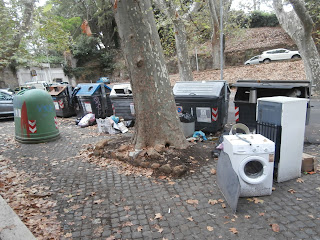As some of the readers might remember, my experience with Szlachetna Paczka last year was rather bitter and shortly after the 2020 edition was over, I was intent on giving up on it (as a volunteer).
In mid-2021, as the virus eased and the vaccination programme was giving hope to put the pandemic closer to an end, I reconsidered my decision. In July, when I learnt a fellow volunteer had been appointed the leader of Ursynów area, I have made up my mind to join.
This year we started out early and closed our ranks in early September to look out for families which could become beneficiaries of programme. Thanks to concerted efforts we have managed to visit 74 families (vs. around 30 in 2020) and decided to organise aid for 46 of them (vs. 14 in 2020); thus we achieved a decent hit ratio of 62%.
I personally visited 15 families, 9 of them were brought in, for 4 I was a primary volunteer, which meant I had to do all the paperwork for them and co-ordinate contact with donators.
Back in July I was appointed to be in charge of logistics. This meant I had to find a centre of operations (magazyn) for the final weekend. I have fixed us up with the space in a newly opened Ursynowskie Centrum Kultury “Alternatywy”. The location and the very facilities have turned out to be a perfect venue. I have also drawn up a plan for collection and distribution of gift packages. Picking up 46 packages from donators and transporting them to 46 families seemed a big challenge, but thanks to an excellent planning (I will not spare myself praise this time) and execution (hats down to fellow volunteers), it all worked like a dream.
Human-wise, delivering packages to families, seeing their emotions and hoping the aid would kick-start them and open a door towards a better tomorrow brought off a lot of joy.
Although delivery of packages is over, the edition has not come to an end. I shall visit my families in coming weeks to see how they are faring and help them overcome some of barrier that hold them back.
Although we definitely pulled it off in 2021, there are lessons to be learnt before the 2022 edition in which I will definitely get involved. Firstly, we will start even earlier. Secondly, donators will need to instructed how to pack the gifts (nobody feels like lugging huge boxes whose weights reached 30 kilograms) and their preferences regarding pick-up timing will need to be agreed earlier. Thirdly, volunteers ought to handle transport of furniture and heavy white goods well ahead of the final weekend, so that those gifts do not go through the centre of operations.



























